CompTIA CV1-003 CompTIA Cloud+ Certification Beta Exam Online Training
CompTIA CV1-003 Online Training
The questions for CV1-003 were last updated at Apr 22,2025.
- Exam Code: CV1-003
- Exam Name: CompTIA Cloud+ Certification Beta Exam
- Certification Provider: CompTIA
- Latest update: Apr 22,2025
SIMULATION
A company has decided to scale its e-commerce application from its corporate datacenter to a commercial cloud provider to meet an anticipated increase in demand during an upcoming holiday.
The majority of the application load takes place on the application server under normal conditions. For this reason, the company decides to deploy additional application servers into a commercial cloud provider using the on-premises orchestration engine that installs and configures common software and network configurations.
The remote computing environment is connected to the on-premises datacenter via a site-to-site IPSec tunnel. The external DNS provider has been configured to use weighted round-robin routing to load balance connections from the Internet.
During testing, the company discovers that only 20% of connections completed successfully.
INSTRUCTIONS
Review the network architecture and supporting documents and fulfill these requirements:
Part 1:
– Analyze the configuration of the following components: DNS, Firewall 1, Firewall 2, Router 1, Router 2, VPN and Orchestrator Server.
– Identify the problematic device(s).
Part 2:
– Iden tify the correct options to provide adequate configuration for hybrid cloud architecture.
If at any time you would like to bring back the initial state of the simulation, please click the Reset All button.
Part 1:
Cloud Hybrid Network Diagram
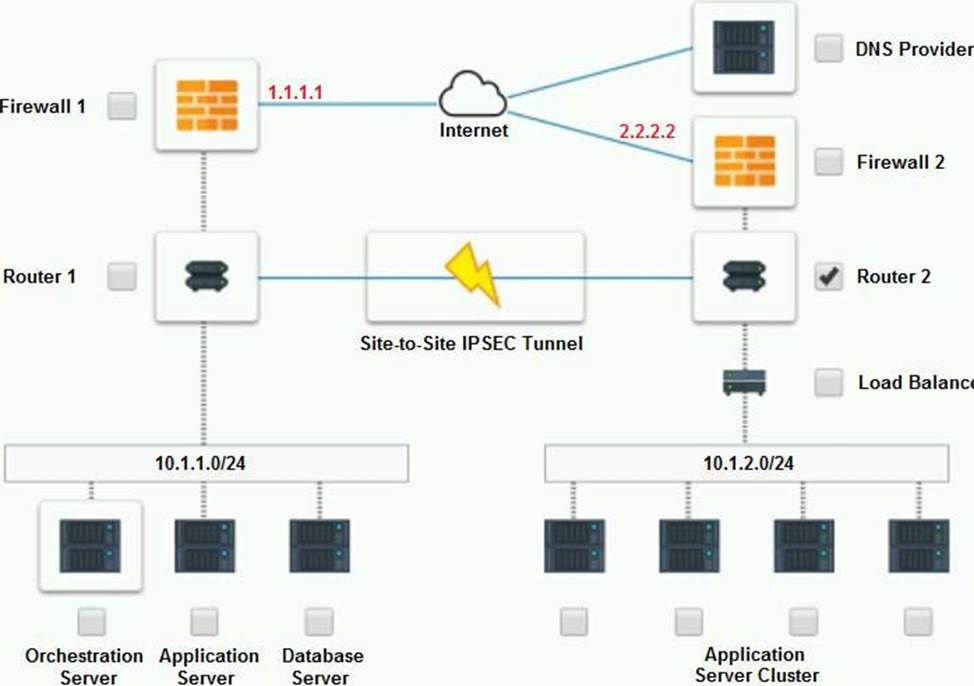
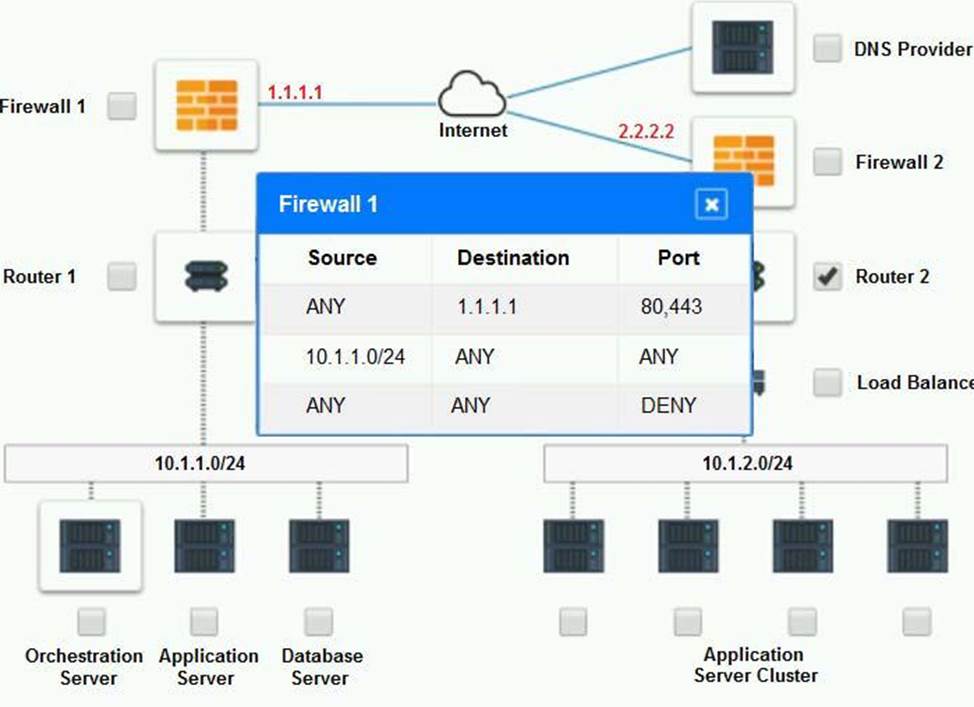
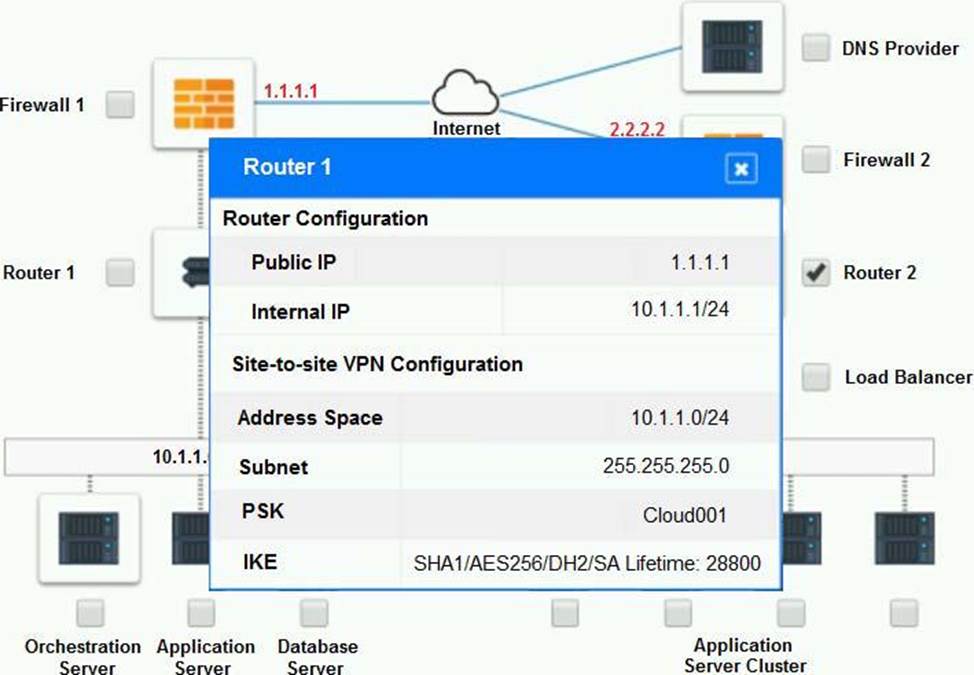
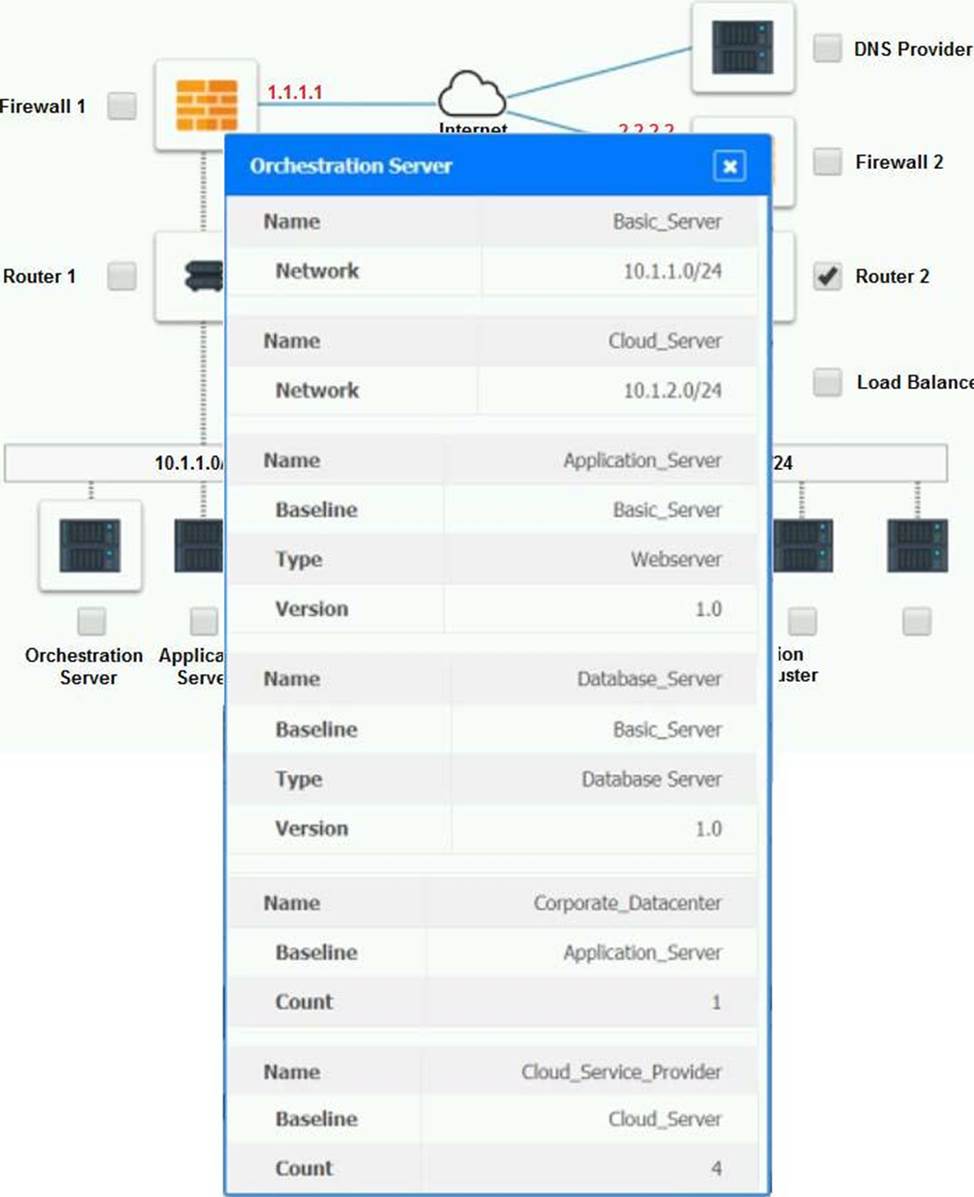
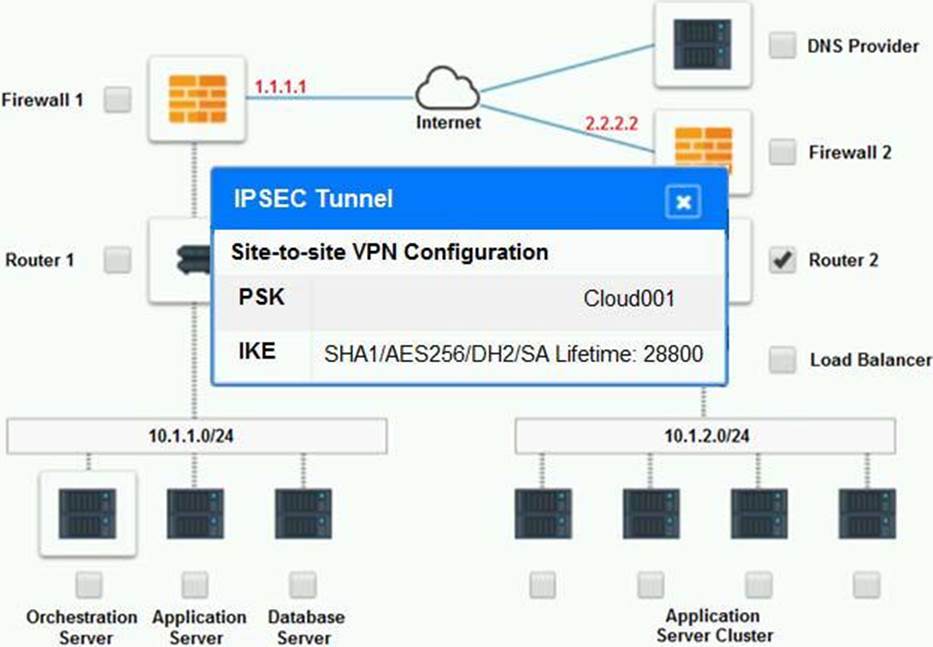
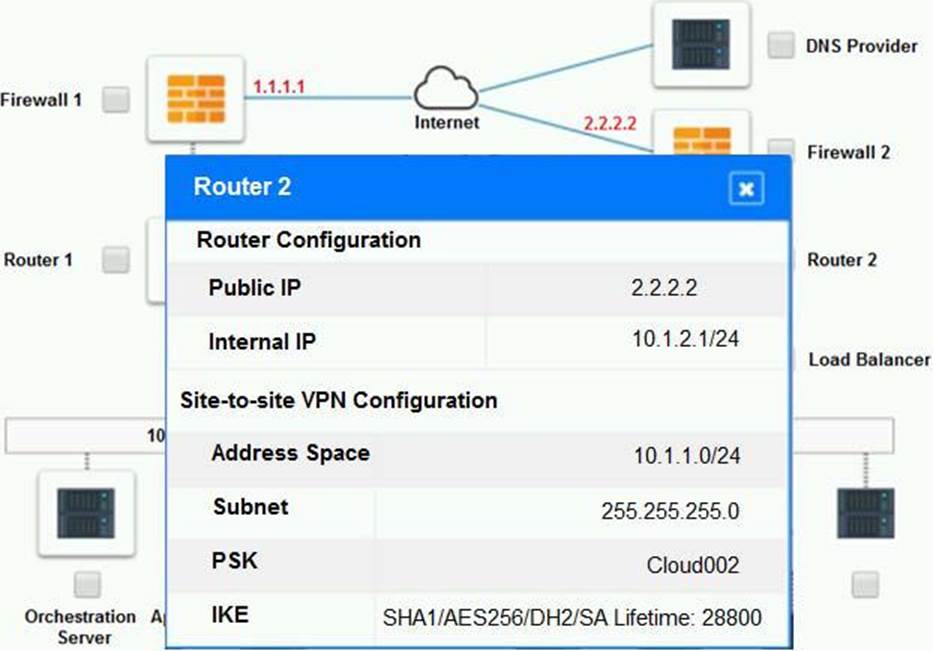
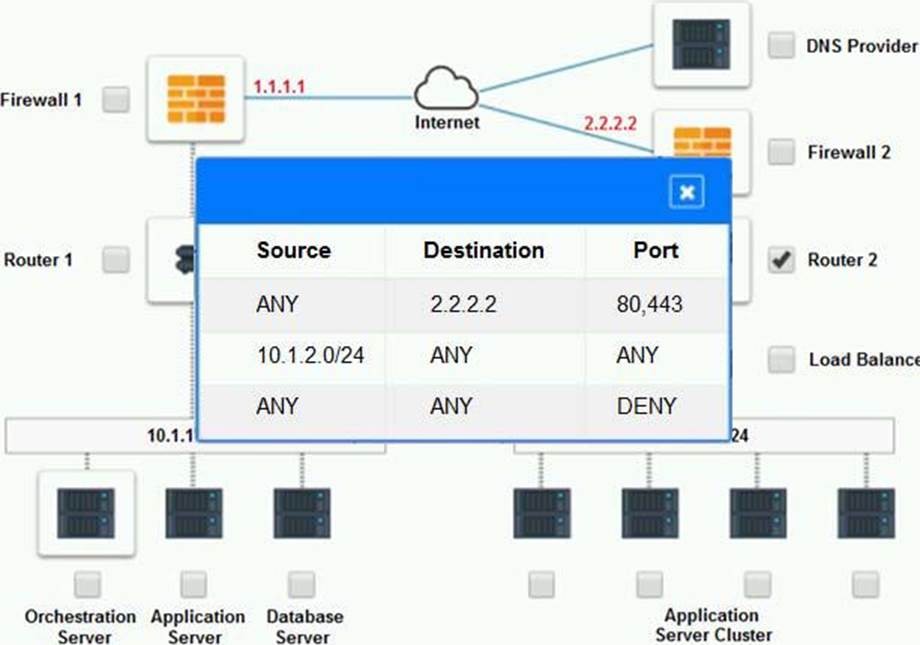
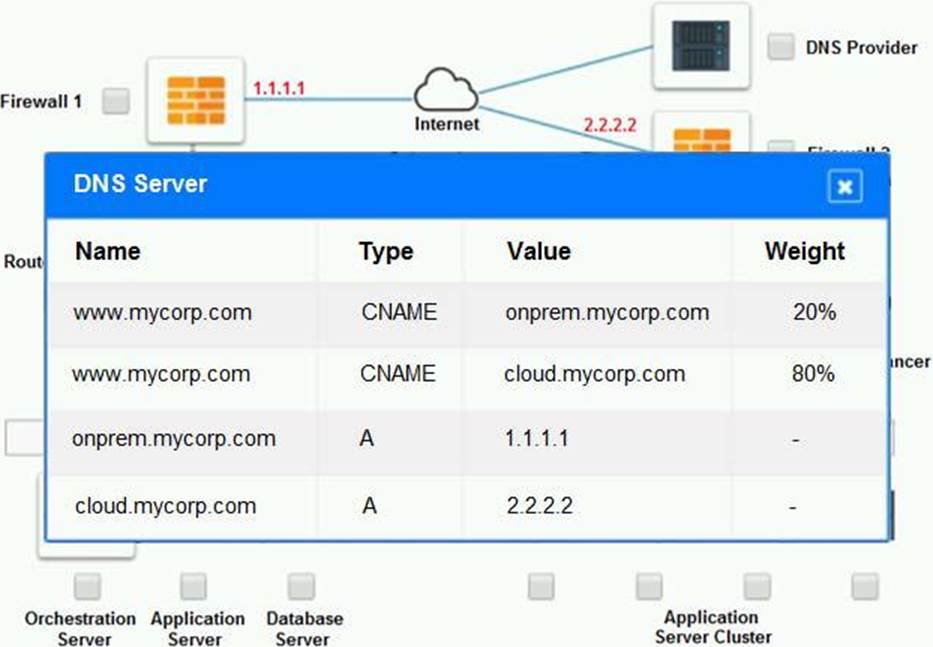
Part 2:
Only select a maximum of TWO options from the multiple choice question
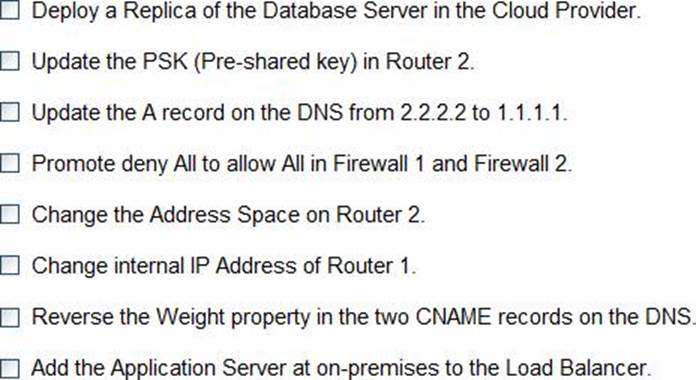
SIMULATION
A company has decided to scale its e-commerce application from its corporate datacenter to a commercial cloud provider to meet an anticipated increase in demand during an upcoming holiday.
The majority of the application load takes place on the application server under normal conditions. For this reason, the company decides to deploy additional application servers into a commercial cloud provider using the on-premises orchestration engine that installs and configures common software and network configurations.
The remote computing environment is connected to the on-premises datacenter via a site-to-site IPSec tunnel. The external DNS provider has been configured to use weighted round-robin routing to load balance connections from the Internet.
During testing, the company discovers that only 20% of connections completed successfully.
INSTRUCTIONS
Review the network architecture and supporting documents and fulfill these requirements:
Part 1:
– Analyze the configuration of the following components: DNS, Firewall 1, Firewall 2, Router 1, Router 2, VPN and Orchestrator Server.
– Identify the problematic device(s).
Part 2:
– Iden tify the correct options to provide adequate configuration for hybrid cloud architecture.
If at any time you would like to bring back the initial state of the simulation, please click the Reset All button.
Part 1:
Cloud Hybrid Network Diagram








Part 2:
Only select a maximum of TWO options from the multiple choice question

SIMULATION
A company has decided to scale its e-commerce application from its corporate datacenter to a commercial cloud provider to meet an anticipated increase in demand during an upcoming holiday.
The majority of the application load takes place on the application server under normal conditions. For this reason, the company decides to deploy additional application servers into a commercial cloud provider using the on-premises orchestration engine that installs and configures common software and network configurations.
The remote computing environment is connected to the on-premises datacenter via a site-to-site IPSec tunnel. The external DNS provider has been configured to use weighted round-robin routing to load balance connections from the Internet.
During testing, the company discovers that only 20% of connections completed successfully.
INSTRUCTIONS
Review the network architecture and supporting documents and fulfill these requirements:
Part 1:
– Analyze the configuration of the following components: DNS, Firewall 1, Firewall 2, Router 1, Router 2, VPN and Orchestrator Server.
– Identify the problematic device(s).
Part 2:
– Iden tify the correct options to provide adequate configuration for hybrid cloud architecture.
If at any time you would like to bring back the initial state of the simulation, please click the Reset All button.
Part 1:
Cloud Hybrid Network Diagram








Part 2:
Only select a maximum of TWO options from the multiple choice question

SIMULATION
The QA team is testing a newly implemented clinical trial management (CTM) SaaS application that uses a business intelligence application for reporting. The UAT users were instructed to use HTTP and HTTPS.
Refer to the application dataflow:
1A C The end user accesses the application through a web browser to enter and view clinical data.
2A C The CTM application server reads/writes data to/from the database server.
1B C The end user accesses the application through a web browser to run reports on clinical data.
2B C The CTM application server makes a SOAP call on a non-privileged port to the BI application server.
3B C The BI application server gets the data from the database server and presents it to the CTM application server.
When UAT users try to access the application using https://ctm.app.com or http://ctm.app.com, they get a message stating: “Browser cannot display the webpage.” The QA team has raised a ticket to troubleshoot the issue.
INSTRUCTIONS
You are a cloud engineer who is tasked with reviewing the firewall rules as well as virtual network settings.
You should ensure the firewall rules are allowing only the traffic based on the dataflow.
You have already verified the external DNS resolution and NAT are working.
Verify and appropriately configure the VLAN assignments and ACLs. Drag and drop the appropriate VLANs to each tier from the VLAN Tags table. Click on each Firewall to change ACLs as needed.
If at any time you would like to bring back the initial state of the simulation, please click the Reset All button.
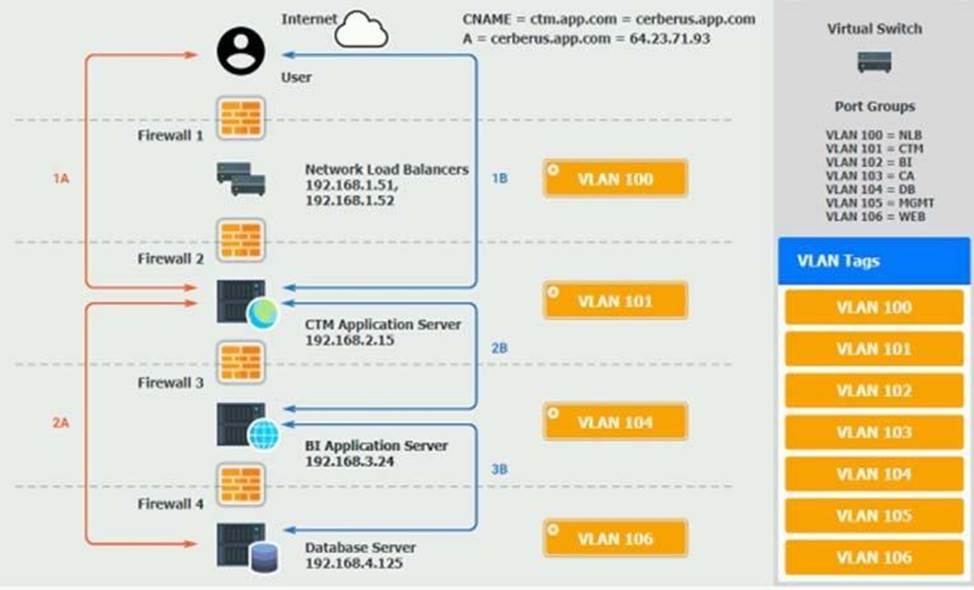
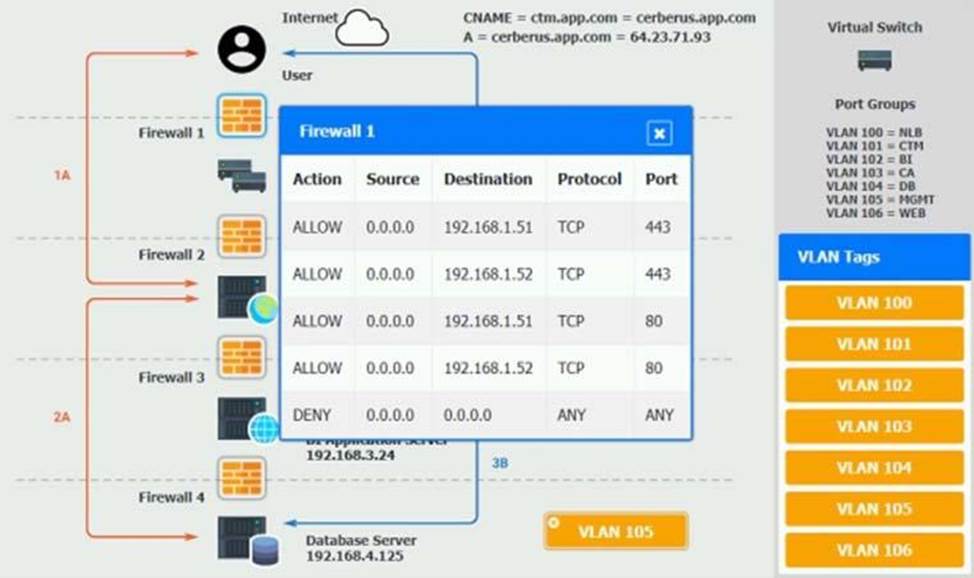
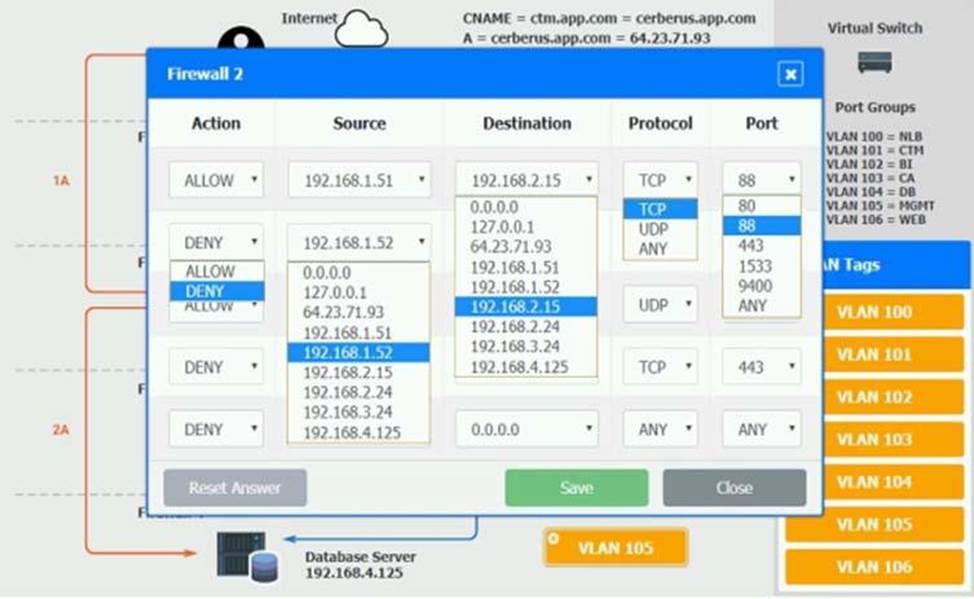
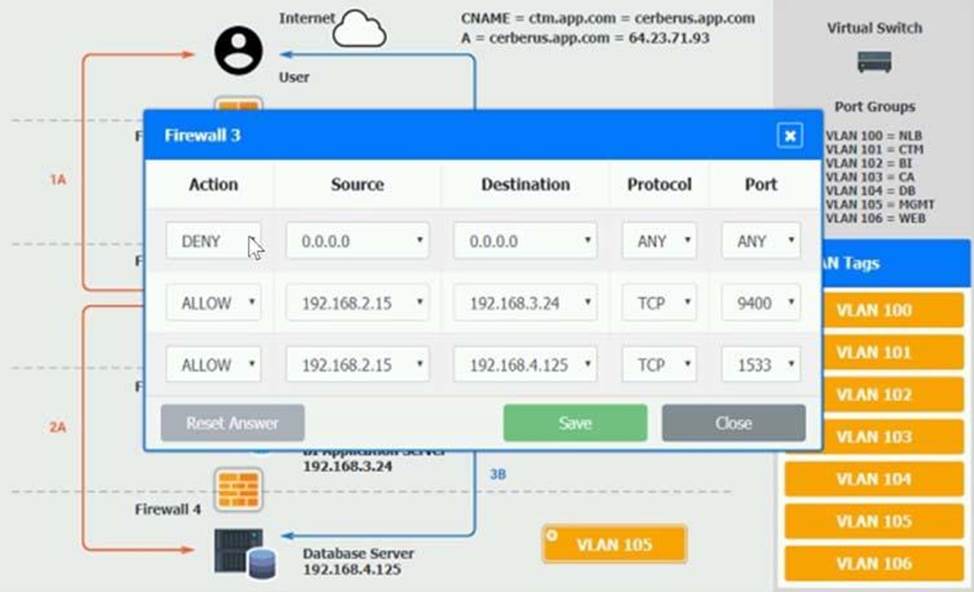
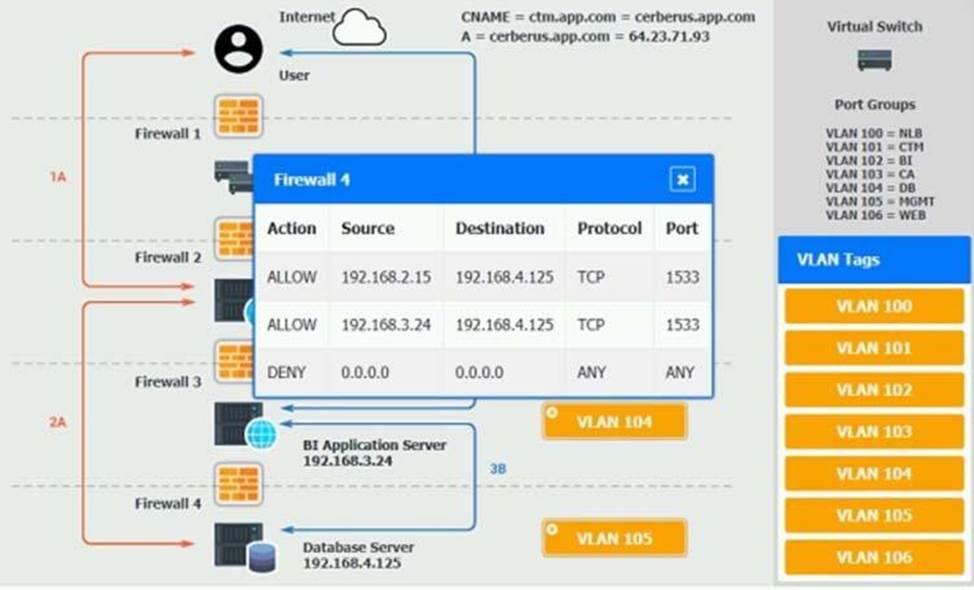
A DevOps administrator is automating an existing software development workflow. The administrator wants to ensure that prior to any new code going into production, tests confirm the new code does not negatively impact existing automation activities.
Which of the following testing techniques would be BEST to use?
- A . Usability testing
- B . Regression testing
- C . Vulnerability testing
- D . Penetration testing
A marketing team is using a SaaS-based service to send emails to large groups of potential customers. The internally managed CRM system is configured to generate a list of target customers automatically on a weekly basis, and then use that list to send emails to each customer as part of a marketing campaign. Last week, the first email campaign sent emails successfully to 3,000 potential customers. This week, the email campaign attempted to send out 50,000 emails, but only 10,000 were sent.
Which of the following is the MOST likely reason for not sending all the emails?
- A . API request limit
- B . Incorrect billing account
- C . Misconfigured auto-scaling
- D . Bandwidth limitation
A VDI administrator has received reports of poor application performance.
Which of the following should the administrator troubleshoot FIRST?
- A . The network environment
- B . Container resources
- C . Client devices
- D . Server resources
Due to a policy change, a few of a customer’s application VMs have been migrated to synchronously replicated storage. The customer now reports that performance is lower. The systems administrator checks the resource usage and discovers CPU utilization is at 60% and available memory is at 30%.
Which of the following is the MOST likely cause?
- A . There is not enough vCPU assigned
- B . The application is not compatible with the new settings
- C . The new configuration is adding latency
- D . The memory of the VM is underallocated
An organization requires the following to be achieved between the finance and marketing departments:
– Allow HTTPS/HTTP.
– Disable FTP and SMB traffic.
Which of the following is the MOST suitable method to meet the requirements?
- A . Implement an ADC solution to load balance the VLAN traffic
- B . Configure an ACL between the VLANs
- C . Implement 802.1X in these VLANs
- D . Configure on-demand routing between the VLANs
A systems administrator is building a new virtualization cluster. The cluster consists of five virtual hosts, which each have flash and spinning disks. This storage is shared among all the virtual hosts, where a virtual machine running on one host may store data on another host.
This is an example of:
- A . a storage area network
- B . a network file system
- C . hyperconverged storage
- D . thick-provisioned disks
Latest CV1-003 Dumps Valid Version with 110 Q&As
Latest And Valid Q&A | Instant Download | Once Fail, Full Refund

